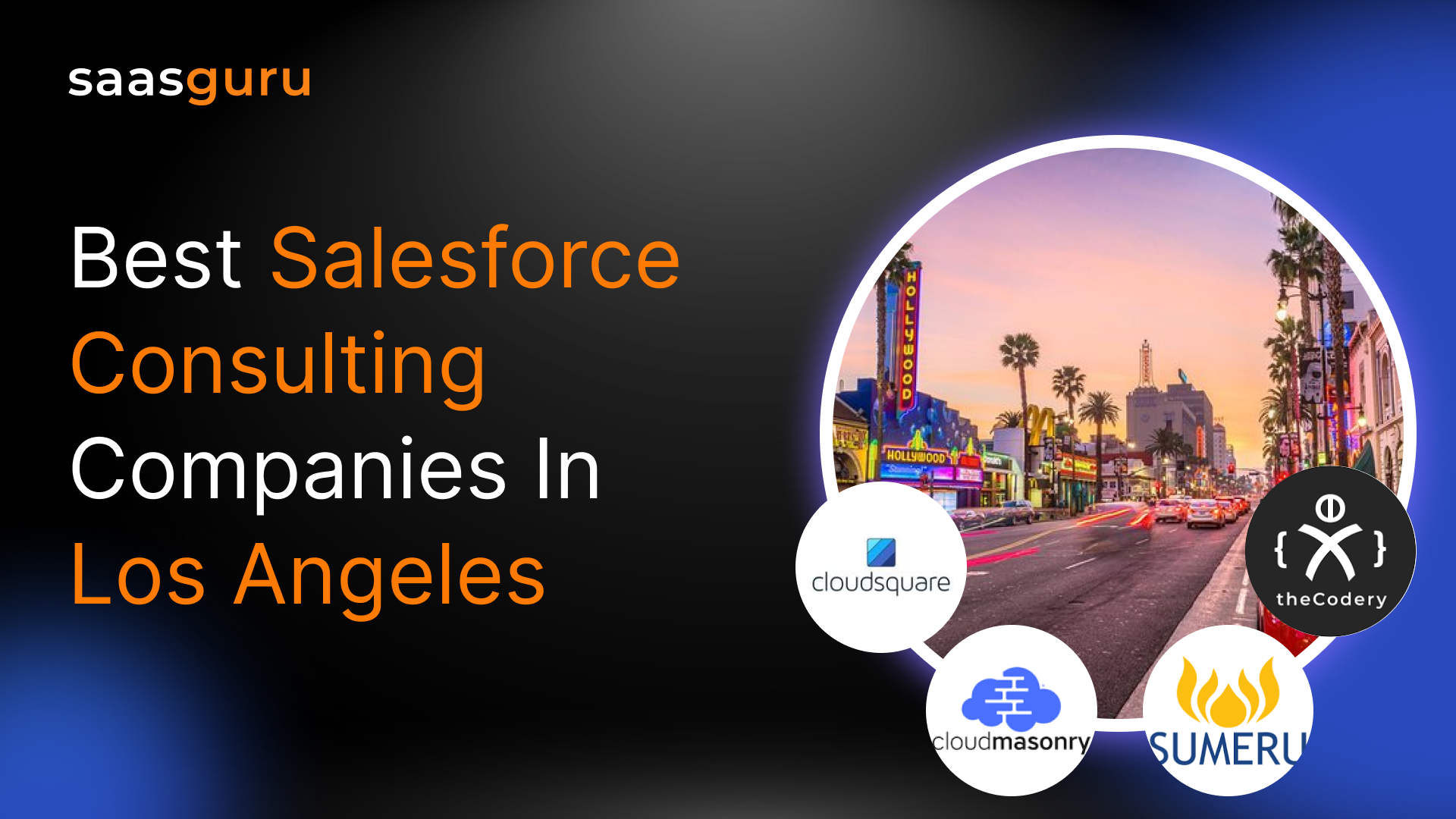Salesforce, as one of the world’s leading cloud-based software providers, offers a myriad of services, functions, and terminologies. This leads to a plethora of acronyms being used in the Salesforce ecosystem. In this blog, we aim to shed light on 100+ Salesforce Acronyms, making your journey through the Salesforce environment more straightforward.
By reading this blog, you will:
- Learn Salesforce acronyms and their role within the Salesforce ecosystem.
- Discover how these acronyms relate to various Salesforce services and functionalities.
Let’s dive in and start exploring these Salesforce Acronyms.
Salesforce General Acronyms
- CRM: Customer Relationship Management – This is the type of software that Salesforce is built around, helping businesses manage their relationships with customers.
- SFDC: Salesforce Dot Com – Common shorthand for Salesforce.
- SaaS: Software as a Service – This is the type of business model that Salesforce uses, providing its software via the cloud rather than through on-site servers.
- UI: User Interface – The visual layout and controls of a software program, in this case, Salesforce.
- UX: User Experience – Refers to the overall experience of a person using a product like Salesforce, especially in terms of how easy or pleasing it is to use.
Salesforce Technical Acronyms
- API: An acronym for Application Programming Interface – It facilitates interaction between different software solutions. Salesforce APIs play a vital role in its integration with external systems.
- APEX: It denotes Salesforce’s proprietary coding language, specifically created for developing applications within its ecosystem.
- SOQL: An abbreviation for Salesforce Object Query Language – A unique language designed to fetch specific data from your organization’s Salesforce data.
- SOSL: Short for Salesforce Object Search Language – It’s a search language from Salesforce for creating text-based queries against its search index.
- VF: Stands for Visualforce – A developer framework that enables the creation of complex, custom user interfaces that can natively operate within Salesforce.
Salesforce Administration Acronyms
- ADM: Administrator – Salesforce users who manage and maintain Salesforce platforms for businesses.
- MFA: Multi-Factor Authentication – An additional layer of security used to ensure that users are who they say they are.
- SLDS: Salesforce Lightning Design System – The system provides the guidelines to develop user interfaces consistent with the Salesforce Lightning principles and patterns.
- PB: Process builder – A Salesforce tool designed to automate internal procedures.
- WFR: Workflow Rules – A tool by Salesforce to automate standard internal procedures.
Salesforce Product and Services Acronyms
- SC: Sales Cloud – Salesforce platform’s sales application.
- MC: Marketing Cloud – A holistic platform designed to offer personalized, relevant journeys across various channels and devices.
- SC: Service Cloud – An integral Salesforce application designed to deliver personalized, swift customer service.
- CPQ: An abbreviation for Configure, Price, Quote – An efficient sales tool that helps companies generate accurate and swift quotes for orders.
- FSL: Field Service Lightning – A mobile app that gives your field technicians the tools to increase productivity and communicate more effectively with the service team.
Salesforce Platform and System Acronyms
- PaaS: Platform as a Service – This term describes Salesforce’s business model. The platform (Salesforce) is provided via the cloud to developers who build applications (like AppExchange apps) on top of it.
- IDE: Integrated Development Environment – Refers to the development environments where developers code. Salesforce supports several, such as Eclipse and Visual Studio Code.
- LWC: Lightning Web Components – A programming model for building Lightning components on the Salesforce Lightning platform.
- MDAPI: Metadata API – Allows you to manage customizations in your Salesforce org and to build tools that can manage the metadata model.
- SANDBOX: Salesforce SANDBOX refers to a replica of your production environment, which is typically used for development and testing purposes.
Salesforce Data and Analytics Acronyms
- BI: Business Intelligence – It comprises strategies and technologies adopted by businesses for data analysis, offering actionable insights to help stakeholders make informed business decisions.
- EDA: Enterprise Data Architecture – The architecture of Salesforce data objects and how they are linked.
- ODS: Operational Data Store – Refers to a type of database optimized for operational reporting.
- ETL: An abbreviation for Extract, Transform, Load – A data warehousing process accountable for extracting data from source systems and importing it into a data warehouse.
- AI: Artificial Intelligence – Salesforce harnesses the power of AI via its array of services known as Einstein, generating predictions and suggestions based on a company’s operational practices and customer information.
Salesforce Certification Acronyms
- PD1: Platform Developer I – This Salesforce certification distinguishes individuals proficient in crafting customized applications on the Salesforce platform, using both declarative and programmatic approaches.
- PD2: Platform Developer II – An advanced Salesforce certification for professionals with advanced knowledge and specialized skills in designing, developing, testing, and deploying programmatically.
- ADM201: Administration Essentials for New Admins – A certification aimed at new Salesforce Administrators.
- ADM211: Administration Essentials for Experienced Admin – A certification aimed at experienced Salesforce Administrators.
- TA: Technical Architect – A Salesforce certification that recognizes professionals who can assess customer architecture, design secure, high-performance solutions, and communicate technical solutions effectively.
Take that first step towards your Salesforce dream career by enrolling in our intensive Salesforce Developer Course with capstone projects.
Salesforce Community Acronyms
- MVP: Most Valuable Player – This is a title given by Salesforce to community members who have shown exemplary dedication, leadership, and ongoing contributions.
- UG: User Group – These are community-led groups that meet online and in person to network, learn, and get inspired.
- SWAG: Stuff We All Get – Refers to promotional merchandise or products given away as a form of advertising. Salesforce is known for providing plenty of swag at their events!
- DUG: Developer User Group – A group in the Salesforce community that specifically targets developers.
- SUG: Salesforce User Group – A group in the Salesforce community for general Salesforce users.
Salesforce Development Acronyms
- OOP: Object-Oriented Programming – This type of programming organizes software design around ‘objects’, which can contain data and associated code. Apex, Salesforce’s programming language, is an example of an OOP language.
- JSON: JavaScript Object Notation – A user-friendly data-interchange format that is easy to interpret and generate. It is frequently utilized by Salesforce developers for data exchange.
- REST: Representational State Transfer – This architectural principle for distributed hypermedia systems is utilized by Salesforce through a REST API, enabling external systems to interact with Salesforce data.
- SOAP: Simple Object Access Protocol – This is a protocol reliant on XML for the structured exchange of information in web services. Salesforce provides SOAP API as well for complex integrations.
- JIT: Just-In-Time – In the context of Salesforce, it often refers to Just-In-Time provisioning, which allows for creating or updating a user at the time of login.
Salesforce Cloud Acronyms
- EC: Einstein Cloud – Refers to Salesforce’s AI-powered cloud services.
- HC: Health Cloud – This Salesforce product is geared towards enhancing relationships between healthcare providers and their patients.
- CC: Commerce Cloud – Salesforce platform’s ecommerce application.
- FC: Financial Cloud – A platform built to streamline financial services and simplify the customer experience.
- IoT: Internet of Things – This term refers to the network of everyday objects embedded with computing devices that are connected to the Internet. Salesforce’s IoT Cloud serves as the platform for storing and processing IoT data.
Salesforce Security Acronyms
- SSO: Single Sign-On – This is an authentication service that permits users to employ a single set of credentials to access a variety of applications.
- TFA: Two-Factor Authentication – A security method used to verify a user’s claimed identity using two separate factors.
- IP: Internet Protocol – Refers to a set of rules governing the format of data sent over the internet or other networks. In Salesforce, IP often refers to IP whitelisting, a security feature.
- SSL: Secure Sockets Layer – This standard security protocol establishes an encrypted link between a server and a client.
- TLS: Transport Layer Security – This is a more secure and advanced version of the Secure Sockets Layer (SSL).
Salesforce Services Acronyms
- SLA: Service Level Agreement – This is an agreement between a service provider and its customers that details the level of service that is expected from the provider.
- RTB: Real-Time Bidding – This process involves the immediate buying and selling of online ad impressions through digital auctions.
- E2E: End-to-End – Often refers to end-to-end testing or processes where all the components of a software system are tested to validate the flow from start to end.
Salesforce Integration Acronyms
- ERP: Enterprise Resource Planning – A business system utilized to manage and integrate crucial business parts like inventory, order management, accounting, human resources, customer relationship management (CRM), and more. Salesforce can be synchronized with various ERP systems.
- MVC: Model-View-Controller – This is a design pattern that segments an application into three main components: the Model, the View, and the Controller. Salesforce’s Visualforce employs this pattern.
- JIT: Just in Time – In the Salesforce context, JIT often refers to Just-In-Time provisioning, which allows for creating or updating a user at the time of login.
- CTI: Computer Telephony Integration – Technology that enables computers to interact with telephone systems. Salesforce provides a CTI Toolkit.
- EAI: Short for Enterprise Application Integration – Refers to the employment of software and principles of computer systems architecture to consolidate an array of enterprise computer applications.
Salesforce Mobile Acronyms
- SDK: An acronym for Software Development Kit – A toolkit that facilitates the development of applications. Salesforce offers SDKs for mobile app creation.
- MFA: Mobile First Approach – A design strategy that says websites should be designed for mobile devices before making a version for desktops. Salesforce’s Lightning Experience follows MFA.
- UI/UX: User Interface/User Experience – The aesthetics and usability of software. Salesforce puts a lot of emphasis on the UI/UX of its platform and apps.
- LMA: License Management App – An app provided by Salesforce to vendors who sell apps on the AppExchange. It allows them to manage the licenses of their app.
- SMP: Salesforce Mobile Platform – Refers to the platform that Salesforce provides for building mobile apps.
Salesforce Marketing Acronyms
- B2B: Stands for Business-to-Business – Refers to businesses primarily dealing with other businesses. The Salesforce B2B Commerce solution is built for these kinds of businesses.
- B2C: Business-to-Consumer – Refers to businesses that sell directly to consumers. Salesforce B2C Commerce solution is built for these types of businesses.
- ABM: Account-Based Marketing – This strategy focuses on marketing based on account knowledge, in which an organization treats and communicates with each prospect or customer account as a unique market.
- ROI: Return on Investment – This measures the profitability of an investment, and it’s often utilized in Salesforce to evaluate the success of CRM adoption.
- SEO: Search Engine Optimization – This involves increasing the quality and quantity of website traffic through organic search engine results. Salesforce B2B Commerce has built-in SEO features.
Salesforce Implementation Acronyms
- QA: Quality Assurance – This is a preventative approach designed to avoid errors in manufactured goods and prevent problems when delivering services or solutions to consumers.
- UAT: User Acceptance Testing – The end-user or the client conducts this type of testing to verify the functionality of the software system before transitioning the software application into a production environment.
- SIT: System Integration Testing – This testing is performed on a fully integrated system to assess the system’s adherence to its stated requirements.
- BAU: Business As Usual – In the context of Salesforce implementation, this refers to the stabilization period after a Salesforce product has gone live.
Salesforce Project Management Acronyms
- PM: Project Manager – The person accountable for planning, implementing, and concluding a project. Salesforce has many certified PMs who oversee Salesforce implementations.
- CR: Change Request – A proposition to modify a product or system, often proposed by the client during a project.
- WBS: Work Breakdown Structure – This is a hierarchical delineation of the complete scope of work that the project team will undertake to fulfill the project objectives and deliverables.
- KPI: Key Performance Indicator – A quantifiable value that illustrates how effectively a company is reaching its key business goals. Salesforce’s reports and dashboards are used to monitor these KPIs.
- PMO: Project Management Office – This is the organizational division that establishes and upholds the project management standards within an organization.
Salesforce Ecosystem Acronyms
- ISV: Independent Software Vendor – A firm that specializes in creating or selling software for mass or niche markets. Many Independent Software Vendors (ISVs) offer their solutions on Salesforce’s marketplace, AppExchange.
- SMB: Small to Midsize Business – Salesforce has solutions designed specifically for SMBs to manage their customer relationships.
- VAR: Value-Added Reseller – This refers to a business that enhances an existing product with additional features or services, then resells this integrated product or full-fledged solution.
- SI: Systems Integrator – An individual or company specialized in integrating component subsystems into a whole and ensuring those subsystems operate in unison.
- GSI: Global Systems Integrator – These are large consultancies like Deloitte, Accenture, and others that can handle large, complex Salesforce implementations.
Salesforce Governance Acronyms
- RACI: Responsible, Accountable, Consulted, and Informed – A model employed to define roles and responsibilities in Salesforce project management and governance.
- SOW: Statement Of Work – A widely utilized project management document that specifies project-related activities, deliverables, and timelines.
- SOP: Standard Operating Procedure – A comprehensive set of instructions designed to guide workers in executing complex routine tasks.
- QC: Quality Control – The process by which companies review all production-involved factors for quality. In the Salesforce context, it refers to the measures taken to ensure the quality of data or custom development.
- ACL: Access Control List – A compilation of permissions linked with an object. It specifies which users or system processes have access to objects, as well as the operations allowed on given objects.
Salesforce Release Acronyms
- LTS: Long-Term Support – Refers to Salesforce versions that are supported over a longer period than usual.
- GA: General Availability – When a product version is available to all customers. This comes after beta testing and is considered the ‘final’ version.
- EA: Early Access – Allows customers to preview the upcoming release in their sandbox before it goes live.
- PS: Patch Set – Small collections of files that are used to correct issues in software. Salesforce provides these periodically to fix bugs or security issues.
- RUP: Release Update Policy – This outlines the policies that Salesforce has around their release cycles and how they handle updates.
Salesforce Tools Acronyms
- CLI: Command Line Interface – Salesforce provides a powerful command-line interface for developers to interact with orgs, manipulate metadata and data, and execute tests.
- SFDX: Salesforce Developer Experience – A suite of tools allowing developers to construct and manage Salesforce apps throughout their lifecycle.
- VS: Visual Studio – A code editor that can be used with Salesforce DX for a powerful, integrated developer experience.
- Chatter: Chatter is Salesforce’s collaboration software solution that functions like a social networking platform for enterprises.
- DML: Data Manipulation Language – Refers to the syntax in Salesforce for handling data. It allows developers to perform operations like insert, update, upsert, delete, and undelete.
Conclusion
Navigating the Salesforce environment can initially seem like an uphill battle, with an abundance of acronyms and jargon to decipher. However, with this comprehensive guide to Salesforce acronyms, you’re now equipped to speak the language fluently, giving you the tools to harness the platform’s full power.
For those who are inspired to delve deeper into the Salesforce ecosystem, saasguru offers a meticulously curated Salesforce Developer Course. This training aims to mold beginners into adept Salesforce developers. Acquire knowledge from industry specialists, and develop the skills necessary to advance your career.
Remember, knowledge is power, and by mastering these Salesforce acronyms, you’re setting yourself up for success in the Salesforce ecosystem and beyond!
Stay tuned with saasguru for more latest updates on Salesforce. Don’t forget to join our saasguru Slack community where you can constantly interact with Salesforce pros for FREE. Whether you’re a novice or a seasoned user, our emphasis on best practices and valuable industry insights empowers you to overcome any obstacle and fully leverage the potential of the Salesforce platform. Sign up with saasguru today and embark on your path to Salesforce proficiency!
 Bootcamps
Bootcamps
 Mock Exams
Mock Exams
 Hands-on Labs
Hands-on Labs
















